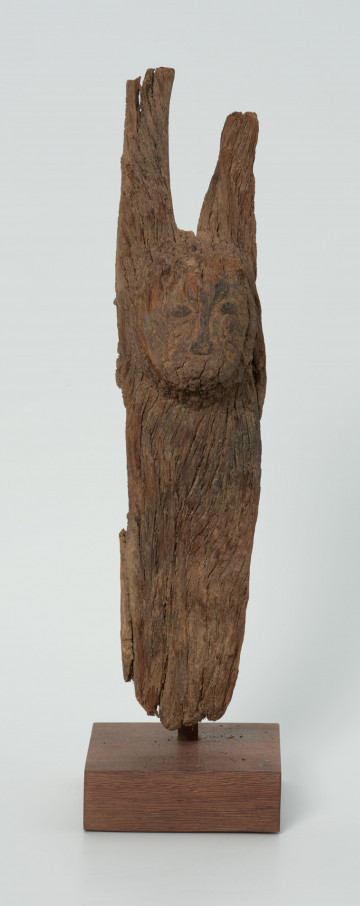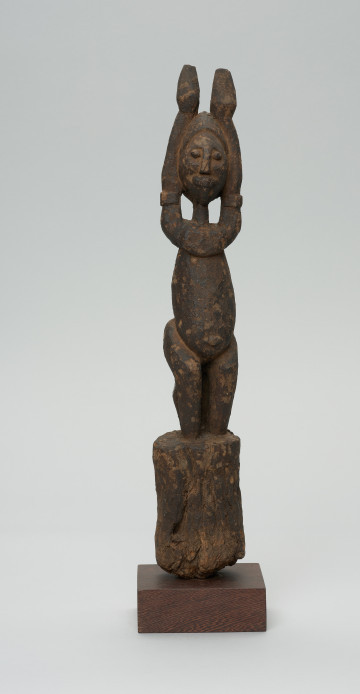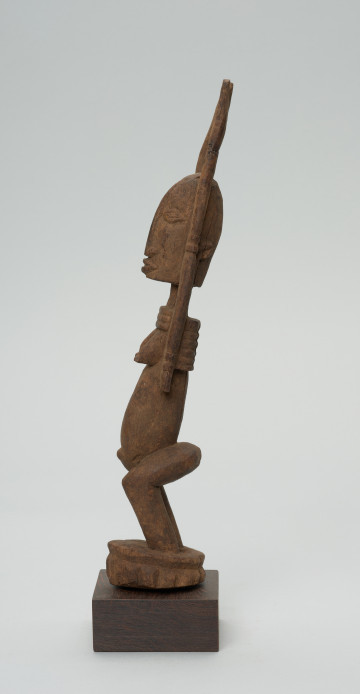
Figure - ancestor
między 1901 — 1950
National Museum in Szczecin
Part of the collection: Collection of Dogonian art
The most significant motif of Dogon art are the figural representations of ancestors, which are set up on altars dedicated to them. Images of real and mythical, male, female and androgynous ancestors appear here. Some of the figures present figures with their hands raised in the air. This gesture is interpreted as a prayerful effort to unite earth and sky. The sign of this alliance is the rain, so important for farmers. It is believed that the Tellem, mysterious people who inhabited the Bandiagara Massif before the arrival of the Dogon, originally carved their ancestors in this way. This motif became part of the Dogon tradition and today the connection with the Tellem is only evidenced by the name tellem, which is used to describe the figures.Among the anthropomorphic representations there are also female figures, sometimes depicted accompanied by children. They represent the primogeniture and allude to the female fertility valued in Africa. In the figural art of the Dogon, images of animals are also popular, especially those particularly important in their mythology: These include the crocodile, commonly called a caiman, which is the guardian animal of the Amani village, the tortoise, whose structure according to the Dogon is a representation of the universe, the hornbill (calao), which is a symbol of parental generosity and sacrifice, and the pale fox Yurugu, who committed an incestuous act by entering into a relationship with the Earth - his mother, which brought chaos and unrest into the world. The Dogon creators are usually blacksmiths who specialise in obtaining and working iron, but they also enjoy working with wood.
Ewa Prądzyńska
Other names
tellem; dege
Author / creator
Dimensions
cały obiekt: height: 45,5 cm, width: 5,5 cm
Object type
figure
Creation time / dating
Creation / finding place
Identification number
Location / status

między 1901 — 1950
National Museum in Szczecin

między 1901 — 1950
National Museum in Szczecin

między 1951 — 2000
National Museum in Szczecin
DISCOVER this TOPIC
National Museum in Szczecin
DISCOVER this PATH
Educational path